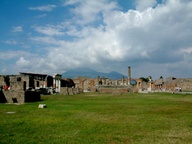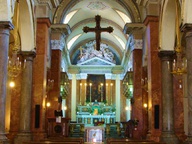IK-00. The Spaces of Confinement
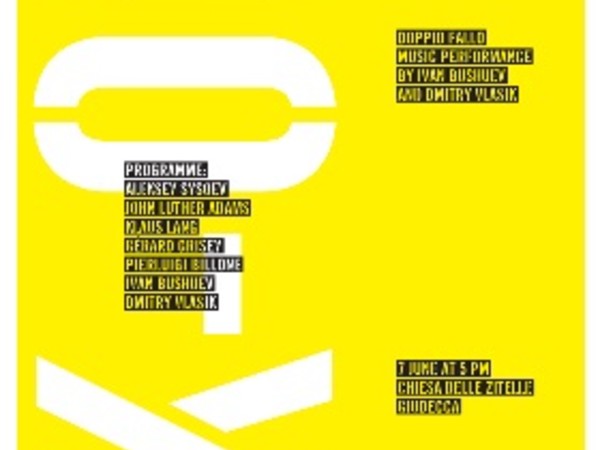
IK-00. The Spaces of Confinement, Casa dei Tre Coi, Venezia
From 07 Giugno 2014 to 24 Agosto 2014
Venice
Place: Casa dei Tre Oci
Address: Giudecca 43
Times: 10 am - 6 pm; closed on Tuesday
Responsibles: Katerina Chuchalina
Ticket price: free entry
Telefono per informazioni: +39 346 2165881
E-Mail info: helweaver@gmail.com
Official site: http://www.treoci.org/
The exhibition, curated by Katerina Chuchalina, is an international collective project in which artists were asked to reflect on the architecture of exclusion, looking for different ways to document and bear witness to the institutional spaces designed to punish and sometimes to correct individuals through their separation from the rest of society.
Prisons, mental hospitals and other institutions are corrective in constant evolution in terms of ideological, structural and architectural, enclosing whole stories of violence and resistance. How does a space prison? As can be witnessed? In that way it can be documented and displayed? The syntax of a prison space is a distorted mixture of fantasy and reality. The artists on display reflect on these areas of constriction, confinement and isolation, which remain functional mechanisms behind the visible, given the division of both spatial and temporal life passing by outside. However, this does not mean that these spaces have an existence totally detached from our daily lives. Their construction generates a series of complex psychological patterns that are part of the human condition in all of us.
Michel Foucault used the Panopticon, designed by the English sociologist and philosopher Jeremy Bentham in 1793 "to transform the prisoners, treat patients, educate children and isolate the insane to give a job to beggars and idlers".
The principle of the Panopticon, based on the exposure of prisoners in contrast with the look of their taskmasters invisible, hidden inside the tower, is widely recognized as a mindset more than an architectural one, to exemplify the set of perspectives and points of view that shape power relations.
The rapid increase of the prisoners was followed by a growth in the construction of the prison that has no precedent - spaces that are monitored by the new technologies of control and surveillance.
This new reality not only produces new spaces but also new observation techniques and new imaginary worlds that emerge from documentation tools of surveillance systems. The space is closed and isolated prison then demystified and deterritorialized, prisons become a mirror of society and at the same time his stunt and projection. The artists reflect on these processes and the use of isolation spaces such as laboratories for experiments anthropological and technicians that shed light on patterns of behavior and manipulation tools individually.
You can find the hostile climate of the prison in its integration with the surrounding landscape. Prisons often act as a visual reminder of the colonial occupation or other institutions of the dominant power. The hostile landscape and harsh climate in which they were built some prisons may act as an additional means of separation from the outside world, space, and at the same time discourage the flight towards it.
The artists explore the limits of the documentation and the political representation of these realities, working with remote territories of the prisons "natural" as those of the first Gulag camps. In the exhibition we find those few survivors landscapes, designed by some of the prisoners of the Gulag in the Soviet age, which are both works of art and witness the attempt to deal with the invisible walls of the maximum security of the surrounding landscape.
Prisons, mental hospitals and other institutions are corrective in constant evolution in terms of ideological, structural and architectural, enclosing whole stories of violence and resistance. How does a space prison? As can be witnessed? In that way it can be documented and displayed? The syntax of a prison space is a distorted mixture of fantasy and reality. The artists on display reflect on these areas of constriction, confinement and isolation, which remain functional mechanisms behind the visible, given the division of both spatial and temporal life passing by outside. However, this does not mean that these spaces have an existence totally detached from our daily lives. Their construction generates a series of complex psychological patterns that are part of the human condition in all of us.
Michel Foucault used the Panopticon, designed by the English sociologist and philosopher Jeremy Bentham in 1793 "to transform the prisoners, treat patients, educate children and isolate the insane to give a job to beggars and idlers".
The principle of the Panopticon, based on the exposure of prisoners in contrast with the look of their taskmasters invisible, hidden inside the tower, is widely recognized as a mindset more than an architectural one, to exemplify the set of perspectives and points of view that shape power relations.
The rapid increase of the prisoners was followed by a growth in the construction of the prison that has no precedent - spaces that are monitored by the new technologies of control and surveillance.
This new reality not only produces new spaces but also new observation techniques and new imaginary worlds that emerge from documentation tools of surveillance systems. The space is closed and isolated prison then demystified and deterritorialized, prisons become a mirror of society and at the same time his stunt and projection. The artists reflect on these processes and the use of isolation spaces such as laboratories for experiments anthropological and technicians that shed light on patterns of behavior and manipulation tools individually.
You can find the hostile climate of the prison in its integration with the surrounding landscape. Prisons often act as a visual reminder of the colonial occupation or other institutions of the dominant power. The hostile landscape and harsh climate in which they were built some prisons may act as an additional means of separation from the outside world, space, and at the same time discourage the flight towards it.
The artists explore the limits of the documentation and the political representation of these realities, working with remote territories of the prisons "natural" as those of the first Gulag camps. In the exhibition we find those few survivors landscapes, designed by some of the prisoners of the Gulag in the Soviet age, which are both works of art and witness the attempt to deal with the invisible walls of the maximum security of the surrounding landscape.
SCARICA IL COMUNICATO IN PDF
COMMENTI

-
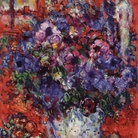 Dal 20 aprile 2024 al 27 ottobre 2024
Conversano | Castello Conti Acquaviva D'Aragona
Dal 20 aprile 2024 al 27 ottobre 2024
Conversano | Castello Conti Acquaviva D'Aragona
-
 Dal 20 aprile 2024 al 29 settembre 2024
Possagno | Museo Gypsotheca Antonio Canova
Dal 20 aprile 2024 al 29 settembre 2024
Possagno | Museo Gypsotheca Antonio Canova
-
 Dal 20 aprile 2024 al 21 luglio 2024
Torino | Mastio della Cittadella
Dal 20 aprile 2024 al 21 luglio 2024
Torino | Mastio della Cittadella
-
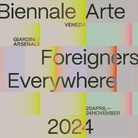 Dal 20 aprile 2024 al 24 novembre 2024
Venezia | Sedi varie
Dal 20 aprile 2024 al 24 novembre 2024
Venezia | Sedi varie
-
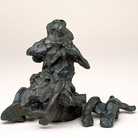 Dal 16 aprile 2024 al 15 settembre 2024
Venezia | Gallerie dell’Accademia
Dal 16 aprile 2024 al 15 settembre 2024
Venezia | Gallerie dell’Accademia
Willem de Kooning and Italy
-
 Dal 17 aprile 2024 al 22 settembre 2024
Venezia | Ateneo Veneto
Dal 17 aprile 2024 al 22 settembre 2024
Venezia | Ateneo Veneto


